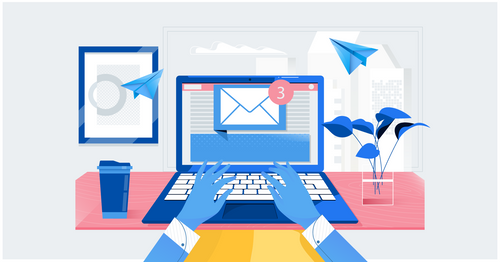In the realm of B2B marketing, the ability to forge strong connections through effective communication channels is invaluable. A cornerstone of this connectivity is a well-crafted email list – a tool that can significantly amplify your business outreach if developed and utilized strategically. This blueprint provides a comprehensive guide to building a B2B email list that is not just large, but rich in quality and potential for engagement.
Laying the Groundwork: Audience Insights and Content Strategy
1. Understand Your Audience:
Your first step is to gain a deep understanding of who your audience is. This involves identifying the industries, company sizes, roles, and challenges that characterize your ideal B2B clients.
- Actionable Tip: Conduct surveys, industry research, and analyze interactions with current clients to fine-tune your understanding of your target audience.
2. Develop a Content Strategy That Resonates:
Once you know your audience, the next step is to develop a content strategy that caters to their interests and needs. This could include whitepapers, industry analysis, case studies, or informative blog posts.
- Actionable Tip: Create content that addresses common questions or challenges in your industry. Ensure it’s insightful and offers real value.
Building and Expanding Your List
3. Optimize Your Website for Conversions:
Your website should be a primary tool for email list building. Ensure that it is optimized to convert visitors into subscribers, with clear calls-to-action and easy-to-find subscription forms.
- Actionable Tip: Place email sign-up forms prominently on your homepage, blog posts, and other key pages. Consider using pop-ups or banners to capture attention.
4. Leverage LinkedIn and Other B2B Networks:
Platforms like LinkedIn are goldmines for B2B connections. Use these platforms to share your content and engage with potential subscribers.
- Actionable Tip: Regularly post on LinkedIn, participate in relevant groups, and connect with industry peers. Use this platform to direct traffic to your sign-up pages.
Enhancing Engagement and Retention
5. Segment and Personalize Your Email Campaigns:
Segmentation and personalization are key to making your emails more relevant and engaging. Tailor your messages based on the recipient's industry, role, or interaction with your content.
- Actionable Tip: Use email marketing software to segment your list and create personalized campaigns that speak directly to the needs of each segment.
6. Implement Automated Email Campaigns:
Automation can significantly enhance the efficiency and effectiveness of your email marketing. Set up automated welcome emails, newsletters, and follow-up sequences.
- Actionable Tip: Use automation to deliver timely and relevant content to your subscribers, keeping them engaged with your brand.
Measuring Success and Making Adjustments
7. Track and Analyze Your Results:
To continuously improve your email list strategy, it’s crucial to track and analyze the performance of your campaigns. Look at open rates, click-through rates, and conversion rates to gauge success.
- Actionable Tip: Regularly review your email campaign analytics to understand what’s working and what’s not. Use these insights to refine your strategy.
Conclusion
Building a B2B email list is a dynamic process that requires an understanding of your audience, a solid content strategy, effective use of digital platforms, and a commitment to ongoing engagement and analysis. By following this comprehensive blueprint, you can master B2B connections, building an email list that not only grows in size but also in the value it brings to your business.



